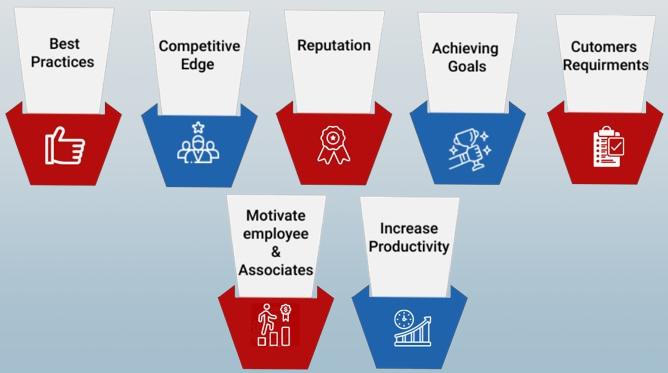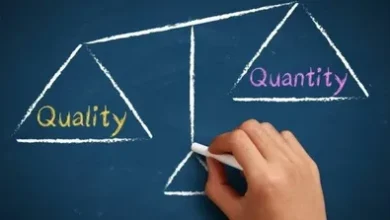Introduction
In the dynamic and highly competitive world of modern business, achieving operational excellence and continuous improvement is crucial for long-term success. The Capability Maturity Model Integration (CMMI) is a globally recognized framework that guides organizations in enhancing their processes, improving performance, and meeting business objectives. Attaining CMMI Level 5 certification, the highest maturity level, signifies an organization’s commitment to process optimization and excellence. This article explores the path to achieving cmmi level 5 certification, the steps involved, and the substantial benefits it brings to organizations.
Understanding CMMI and Its Levels
CMMI is a process improvement framework that provides organizations with essential elements for effective processes. It integrates traditionally separate organizational functions, sets process improvement goals, and offers guidance for quality processes. CMMI comprises five maturity levels, each representing a different stage of process development and maturity:
Initial (Level 1)
At this level, processes are unpredictable, poorly controlled, and reactive. Success depends on individual effort rather than systematic processes.
Managed (Level 2)
Processes are planned, documented, and executed according to policy. Projects are managed, and their processes are often reactive.
Defined (Level 3)
Processes are well-characterized and understood. They are described in standards, procedures, tools, and methods.
Quantitatively Managed (Level 4)
Processes are measured and controlled. Performance metrics are used to manage processes and ensure they meet quality standards.
Optimizing (Level 5)
Focus is on continuous process improvement through incremental and innovative technological enhancements.
The Importance of CMMI Level 5 Certification
Achieving CMMI Level 5 certification represents the highest standard of process maturity and excellence. It demonstrates an organization’s dedication to continuous improvement and innovation. The importance of this certification can be understood through the following aspects:
Competitive Advantage
CMMI Level 5 certification sets an organization apart in the marketplace. It signals to clients, partners, and competitors that the organization is committed to the highest standards of process excellence and continuous improvement.
Enhanced Quality and Performance
Organizations at Level 5 are equipped with the tools and processes necessary to deliver high-quality products and services consistently. This leads to improved performance, customer satisfaction, and business outcomes.
Increased Efficiency
Optimized processes reduce waste, streamline operations, and enhance efficiency. This leads to cost savings and better resource management.
Employee Morale and Engagement
A culture of continuous improvement and innovation fosters employee engagement and morale. Employees feel valued and motivated to contribute to the organization’s success.
Risk Management
CMMI Level 5 organizations have robust risk management processes in place. They can anticipate, identify, and mitigate risks effectively, ensuring smoother project execution.
Benefits of CMMI Level 5 Certification
Achieving CMMI Level 5 certification offers numerous benefits that contribute to an organization’s overall success and growth:
Improved Process Efficiency
At Level 5, organizations have well-defined, efficient processes that reduce redundancies and improve workflow. This leads to faster project completion times and increased productivity.
Enhanced Customer Satisfaction
Consistent delivery of high-quality products and services enhances customer satisfaction and loyalty. Satisfied customers are more likely to return and recommend the organization to others.
Innovation and Continuous Improvement
Level 5 organizations foster a culture of innovation and continuous improvement. They are always looking for ways to enhance processes, adopt new technologies, and stay ahead of industry trends.
Better Decision-Making
Quantitative data and performance metrics enable informed decision-making. Organizations can identify trends, make data-driven improvements, and allocate resources more effectively.
Stronger Market Position
CMMI Level 5 certification strengthens an organization’s market position by showcasing its commitment to excellence and continuous improvement. This can lead to increased market share and business opportunities.
Steps to Achieve CMMI Level 5 Certification
Achieving CMMI Level 5 certification requires a systematic approach and a commitment to process improvement. Here are the essential steps to guide organizations through the certification process:
Initial Assessment
Gap Analysis
Conduct a thorough gap analysis to understand the current state of your processes compared to CMMI Level 5 requirements. Identify areas needing improvement and prioritize them.
Readiness Assessment
Evaluate your organization’s readiness for the certification process. Assess the existing processes, resources, and capabilities to determine if they align with CMMI Level 5 standards.
Form a CMMI Team
Leadership Buy-In
Ensure that the leadership team is committed to the CMMI process and provides the necessary resources. Leadership support is crucial for the success of the certification initiative.
Core Team
Form a core team of process improvement experts, project managers, and key stakeholders to drive the initiative. This team will be responsible for planning, implementing, and monitoring the certification process.
Training and Education
CMMI Training
Provide comprehensive CMMI training for the core team and relevant staff. This ensures everyone understands the framework, terminology, and expectations.
Continuous Learning
Encourage continuous learning and staying updated with the latest CMMI developments and best practices. This fosters a culture of knowledge sharing and improvement.
Process Definition and Documentation
Define Processes
Develop and document processes that align with CMMI Level 5 requirements. Ensure these processes are clear, comprehensive, and practical.
Standard Operating Procedures (SOPs)
Create detailed SOPs for each process, ensuring consistency and clarity. SOPs should be easily accessible and understood by all employees.
Implementation
Pilot Projects
Implement the defined processes in pilot projects to identify any issues and make necessary adjustments. Pilot projects provide valuable insights and help refine processes before organization-wide rollout.
Organization-Wide Rollout
Once the pilot projects are successful, roll out the processes across the organization. Ensure consistent implementation and adherence to the defined processes.
Measurement and Analysis
Data Collection
Implement robust data collection mechanisms to gather performance metrics. Collect data on key process indicators to measure efficiency, effectiveness, and compliance.
Quantitative Analysis
Analyze the data to identify trends, strengths, and areas for improvement. Use statistical techniques for a quantitative understanding of process performance.
Continuous Improvement
Process Optimization
Regularly review and refine processes based on data analysis and feedback. Continuous improvement is a core principle of CMMI Level 5 certification.
Innovative Practices
Encourage innovative practices and the adoption of new technologies to drive continuous improvement. Stay abreast of industry trends and advancements.
Internal Audit
Pre-Assessment Audit
Conduct an internal audit to ensure compliance with CMMI Level 5 requirements. Address any non-compliances or gaps identified during the audit.
Management Review
Present the audit findings to the management team and get their feedback and approval. Management review ensures alignment with organizational goals and objectives.
External Appraisal
Select a Lead Appraiser
Choose an accredited CMMI Lead Appraiser to conduct the formal appraisal. The lead appraiser will evaluate your processes, documentation, and implementation.
Appraisal Preparation
Prepare thoroughly for the appraisal by reviewing documentation, conducting mock interviews, and ensuring all processes are in place.
Certification
Formal Appraisal
Undergo the formal CMMI Level 5 appraisal. The appraiser will evaluate your processes, documentation, and implementation to ensure compliance with CMMI Level 5 standards.
Certification Award
If successful, your organization will be awarded CMMI Level 5 certification. This certification recognizes your commitment to process excellence and continuous improvement.
Best Practices for Sustaining CMMI Level 5 Certification
Achieving CMMI Level 5 certification is a significant milestone, but maintaining it requires ongoing effort. Here are some best practices to sustain your certification:
Regular Audits
Conduct regular internal and external audits to ensure continued compliance with CMMI requirements. Audits help identify areas for improvement and ensure processes remain effective.
Continuous Training
Provide continuous training and development opportunities for staff to keep them updated with the latest best practices. Training ensures employees have the skills and knowledge needed to maintain process excellence.
Performance Monitoring
Continuously monitor performance metrics and make data-driven decisions for process improvements. Performance monitoring helps identify trends and areas for optimization.
Employee Engagement
Foster a culture of continuous improvement by encouraging employee involvement and feedback. Engaged employees are more likely to contribute to the organization’s success and innovation.
Technology Adoption
Stay abreast of technological advancements and integrate them into your processes to enhance efficiency and effectiveness. Technology can streamline operations and drive innovation.
Challenges and How to Overcome Them
Achieving and maintaining cmmi level 5 certification can be challenging. Here are some common challenges and strategies to overcome them:
Resistance to Change
Employees may resist changes to established processes. Overcome this by involving them in process improvement initiatives and communicating the benefits. Employee buy-in is crucial for successful implementation.
Resource Constraints
The certification process can be resource-intensive. Ensure leadership buy-in and secure necessary resources early on. Allocate resources strategically to support process improvement initiatives.
Complexity of Processes
Documenting and standardizing complex processes can be daunting. Break down processes into manageable steps and use visual aids like flowcharts to simplify documentation.
Sustaining Improvements
Maintaining the improvements over time requires commitment. Establish a robust monitoring and feedback system to ensure sustained excellence. Regularly review and refine processes based on performance data.
Conclusion
Achieving CMMI Level 5 certification is a testament to an organization’s commitment to excellence and continuous improvement. It involves a systematic approach to process improvement, rigorous documentation, and a culture of innovation. By following the steps outlined in this guide and adhering to best practices, organizations can not only achieve but also sustain the highest level of process maturity, leading to enhanced performance, customer satisfaction, and competitive advantage. Embrace the journey towards CMMI Level 5 certification and unlock the potential for top-tier process improvement.





